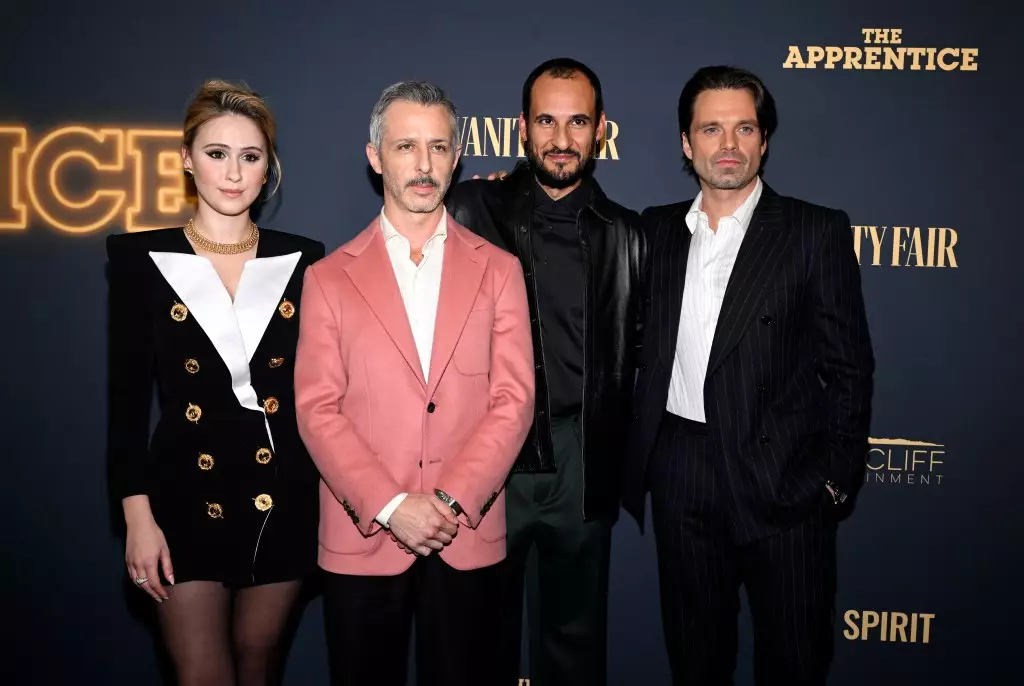The journey of producing the film “The Apprentice,” which portrays the early life of Donald Trump, reflects the complexities and challenges of the contemporary film industry. Under extraordinary circumstances, the film’s story is not solely about the figure it depicts but also about the obstacles it faced and the biting social commentary it inadvertently provides about power dynamics, celebrity culture, and moral ambiguity.
Challenges in Production
James Shani, the head of Rich Spirit, played a pivotal role in bringing “The Apprentice” to a wider audience following a tumultuous production journey. His enthusiastic remarks at the film’s New York premiere underscored the hurdles the team overcame. After the film’s initial financiers, Kinematics, withdrew their support—largely due to political affiliations with Trump—Shani’s company stepped forward, assuming the risks associated with a project laden with potential backlash. The mention of legal threats from Trump’s legal team only adds layers to what already seemed a Sisyphean task.
This veiled reference to the obstacles associated with political pressures showcases not just the film’s narrative distractions but a broader issue faced by filmmakers today: the fear of controversy and litigation stifling creative expression. Shani’s acknowledgment of Ortenberg and their shared commitment to the film is significant. In an age where corporate interests and political sentiment often dictate artistic ventures, the willingness to invest in “The Apprentice” speaks volumes about the filmmakers’ principles.
Filmmaker Ali Abassi’s perspective on the U.S. political climate is refreshingly nuanced compared to traditional Hollywood narratives. Unlike the many sweeping generalizations often encountered, Abassi insists on a more humanized view of individuals within the political spectrum, rendering them complex rather than mere caricatures. This perspective is vital, especially for a film that navigates the turbulent waters surrounding Trump’s legacy.
The film doesn’t shy away from controversy; rather, it embraces it as integral to understanding the fabric of American socio-political life. By portraying Trump—played by Sebastian Stan—as a multifaceted character with both appealing and repugnant traits, the film aims to create a dialogue regarding the dualities many individuals embody. This approach challenges audiences to grapple with their preconceptions and reflect on the nature of leadership and accountability.
A Mirror to Society
The depiction of charged events, such as the unsettling portrayal of domestic abuse, is a critical aspect of “The Apprentice.” Abassi argues that calling the film controversial overlooks the realities surrounding the individual it portrays. By rooting much of the film in factual events, including testimonies and legal records, the film serves as a daunting reminder of the complexities of personal history and public persona.
This intersection of reality and dramatization further complicates the viewing experience. Audiences are left to reconcile their emotional responses with the uncomfortable truths that the film raises. In bringing to light issues of sexual assault and its societal ramifications, “The Apprentice” pushes viewers not just to witness a story but to confront the uncomfortable aspects of celebrity culture and power abuse.
In his post-screening remarks, Shani encouraged the audience to engage with the film through social discourse, emphasizing the importance of dialogue in understanding and processing the film’s themes. The pivotal phrase “it takes a village” resonates deeply in today’s digital age, where conversation, albeit polarized, can lead to greater awareness and insights.
By urging viewers to share their thoughts, the filmmakers are not only promoting the film but inciting a larger movement for accountability in storytelling. Such a position speaks to the greater need for artistic works that challenge the status quo, generate discourse, and encourage viewers to take a stand on issues that resonate far beyond the silver screen.
“The Apprentice” encapsulates a unique moment in cinematic history where art and real-life figures intersect in significant ways. The film’s premiere not only symbolizes success against formidable odds but also acts as a catalyst for discussions surrounding ethics, artistry, and the responsibilities of storytelling in the contemporary political climate. As viewers navigate the intricate portrayal of Trump, they also engage with the larger repercussions of what it means to depict complex characters entrenched in our societal fabric, urging a reflective examination of the narratives we choose to amplify in popular culture.

